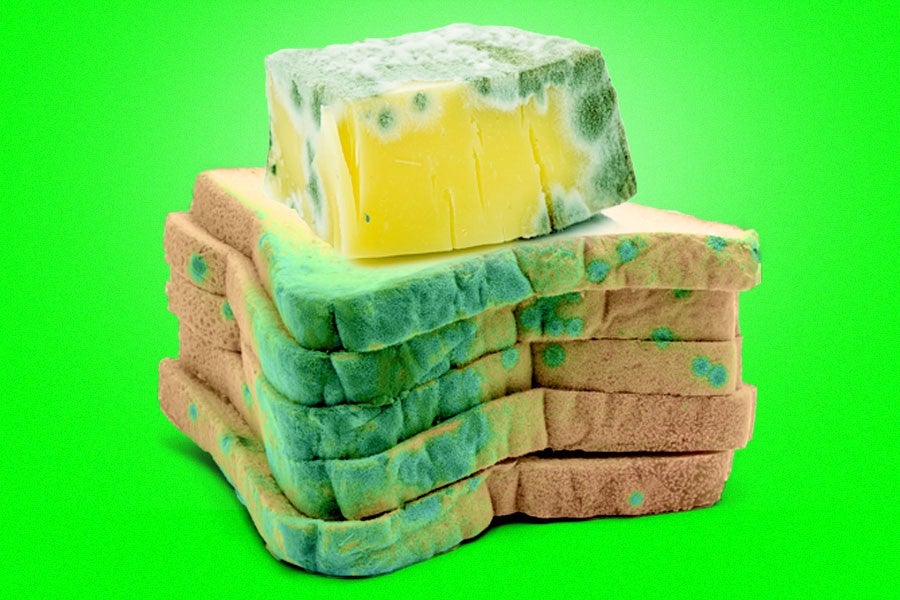When you’re hungry, you’re hungry, and sometimes that means tearing off the patch of green mold growing on a slice of bread in order to make yourself a sandwich. But is this really getting rid of the mold, or should you consider the entire slice a goner when even just a little fuzz shows up on the surface? According to the experts: Prepare to throw out everything in your pantry.
Those green (possibly furry) patches on the surface of bread, cheese or old fruit are spores that allow the mold to reproduce, but like plants, mold has roots and branches called hyphae, which are tough to see and oftentimes burrow much deeper into the food. This means slicing off the colorful spores growing on the outside of the food won’t save you from eating a bunch of fungus.
That said, you also don’t need to run to the emergency room if you’ve ever eaten a chunk of cheese after chopping off just the moldy bit, as you’ll more than likely digest it in the same way you would any other food so long as you have even a functioning immune system.
Still, eating mold certainly isn’t good for you. It can cause irritation of the eyes, nose and throat if you’re allergic to it, and although common bread mold isn’t especially harmful, there are dangerous molds out there—grain and nut crops are particularly susceptible to molds that produce poisonous substances called mycotoxins, the worst of which, aflatoxin, can cause cancer according to the USDA. (Chances are, however, that these more precarious molds never make it to the bread in your pantry or the cheese in your fridge, as they’re monitored by both the Food and Drug Administration and the USDA.)
It’s also worth noting that tougher foods—like hard cheeses, salamis and vegetables such as carrots, bell peppers and cabbage—are more salvageable than others, since those moldy roots we mentioned earlier have a tougher time digging through their hard surfaces. Soft fruits, lunch meats and jams, however, aren’t quite so resilient.
All in all, even though the mold growing on the food in your kitchen probably won’t do you too much damage, it’s best to just avoid it altogether, so here’s some simple steps to prevent mold formation:
- Securely cover foods in the fridge (with plastic wrap or Tupperware).
- Eat all leftovers within four days.
- Don’t leave perishable food out for more than two hours.
Alternatively, dramatically increase your sandwich intake to ensure that no necessary materials are left sitting on the counter (or in the refrigerator) for too long.

